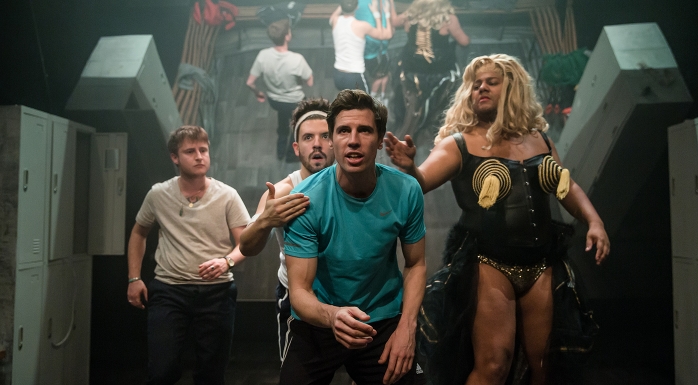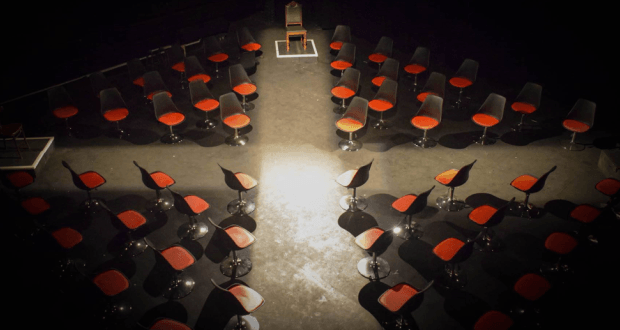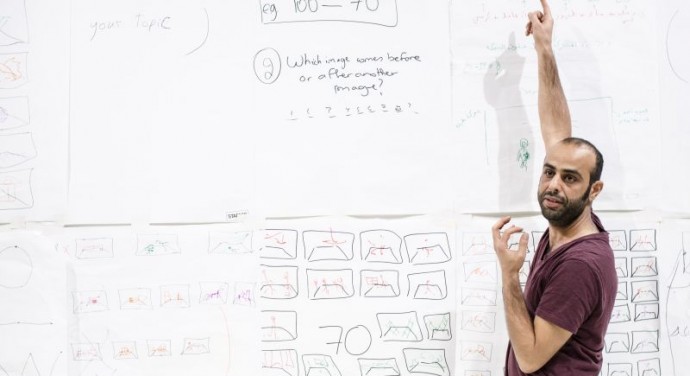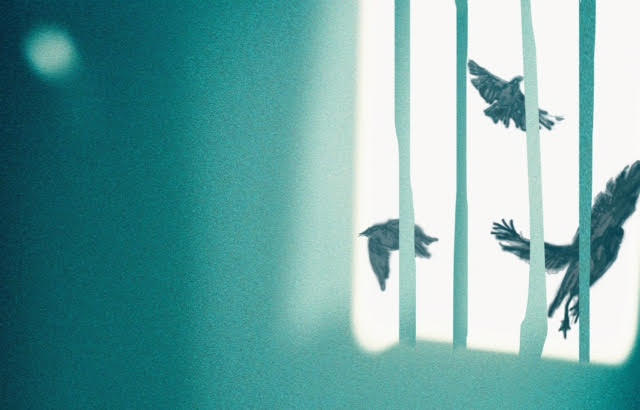Right from the pre-set, the audience view this production through a different lens: directly before us is an empty stage, but we can also see our own reflections in the huge and warped convex mirror encompassing the entire upstage area. This gives an effective hint of what it is to come, a highly stylised and visually compelling exploration of identity – specifically, gender identity and ‘what it means to be a man’.
Rhum and Clay trained at the Lecoq school, and their process emphasises the importance of collaboration with other artists. Here, these influences and directions are very clear, with Testosterone being a fast-paced and extremely physical collaboration with writer/director Kit Redstone (artistic director of Vacuum Theatre). Kit plays himself, the central character seeking to explore his own masculinity, having transitioned from female to male identity two years ago. Kit’s narrative unfolds firstly through direct audience address and then through a montage of stunning physical sequences set in traditionally masculine spaces such as the gym and the football field. These spaces are inhabited by purposely stereotypical characters, delightfully delivered by the company’s artistic directors Julian Spooner as ‘Marlon Brando’ and Matthew Wells as ‘The Sportsman’.
The performance certainly pulls out all the stops in its rigorous exploration of its key question, including wild fantasy sequences in the magic realist style, liberal use of popular music and pop culture references, delightfully exaggerated musical numbers performed by Drag artist Daniel Jacob and of course Lecoq inspired breathtaking movement sequences. These elements are carefully curated to communicate as whole, managing to really interrogate a hugely complex and sensitive topic in a way which fully engages and is at times hilariously tongue-in-cheek. The embedding of a comedic style allows the cast to delve in to the subject in real detail, and Kit’s self-effacing and extremely truthful delivery is a pleasure to witness.
The piece is framed by clever use of repeated refrains and devices; the song ‘King of the Swingers’ punctuates the action, with the line ‘I wanna be like you’ taking on a new level of pertinence, and the narrative itself keeps swinging back to a moment of extreme dilemma for Kit – standing in the male changing room having accidentally borrowed another man’s towel and being too frightened to remove it for fear of what he would reveal. Such notions of fear and shame are explored incredibly well, and the production certainly does not shy away from analysing all angles of its topic, for it is a disturbing truth that transgender people are statistically far more likely to suffer from mental health difficulties. As Kit declares, as he finds himself desperate and alone on a rooftop, ’an act of violence is better than shame’. Yet ultimately, this is a production which is joyous in its subsequent refutation of this very shame, ending on a perfect note of acceptance and celebration which makes it a really impressive and important piece of work.





